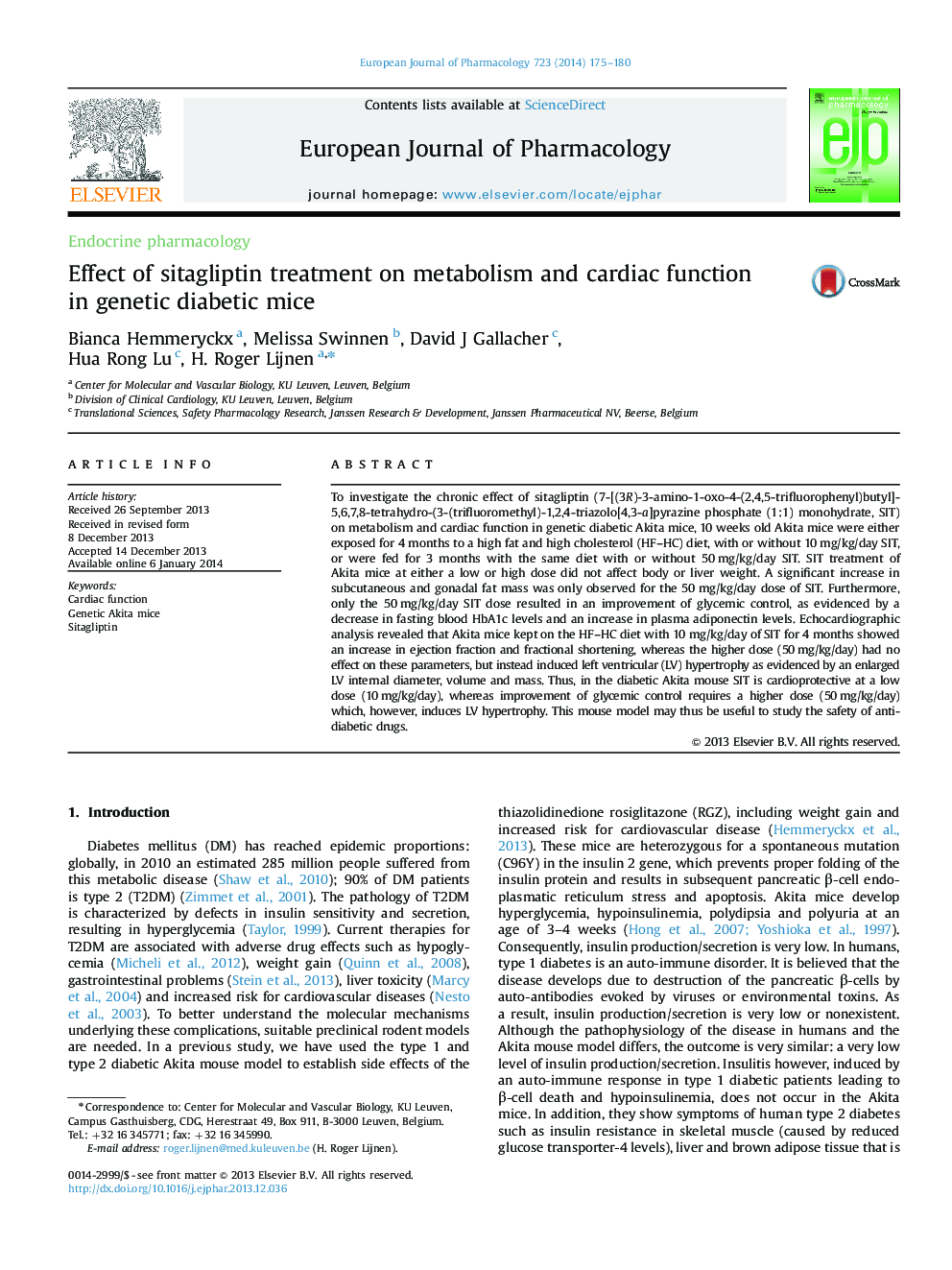| Article ID | Journal | Published Year | Pages | File Type |
|---|---|---|---|---|
| 2532034 | European Journal of Pharmacology | 2014 | 6 Pages |
To investigate the chronic effect of sitagliptin (7-[(3R)-3-amino-1-oxo-4-(2,4,5-trifluorophenyl)butyl]-5,6,7,8-tetrahydro-(3-(trifluoromethyl)-1,2,4-triazolo[4,3-a]pyrazine phosphate (1:1) monohydrate, SIT) on metabolism and cardiac function in genetic diabetic Akita mice, 10 weeks old Akita mice were either exposed for 4 months to a high fat and high cholesterol (HF–HC) diet, with or without 10 mg/kg/day SIT, or were fed for 3 months with the same diet with or without 50 mg/kg/day SIT. SIT treatment of Akita mice at either a low or high dose did not affect body or liver weight. A significant increase in subcutaneous and gonadal fat mass was only observed for the 50 mg/kg/day dose of SIT. Furthermore, only the 50 mg/kg/day SIT dose resulted in an improvement of glycemic control, as evidenced by a decrease in fasting blood HbA1c levels and an increase in plasma adiponectin levels. Echocardiographic analysis revealed that Akita mice kept on the HF–HC diet with 10 mg/kg/day of SIT for 4 months showed an increase in ejection fraction and fractional shortening, whereas the higher dose (50 mg/kg/day) had no effect on these parameters, but instead induced left ventricular (LV) hypertrophy as evidenced by an enlarged LV internal diameter, volume and mass. Thus, in the diabetic Akita mouse SIT is cardioprotective at a low dose (10 mg/kg/day), whereas improvement of glycemic control requires a higher dose (50 mg/kg/day) which, however, induces LV hypertrophy. This mouse model may thus be useful to study the safety of anti-diabetic drugs.
